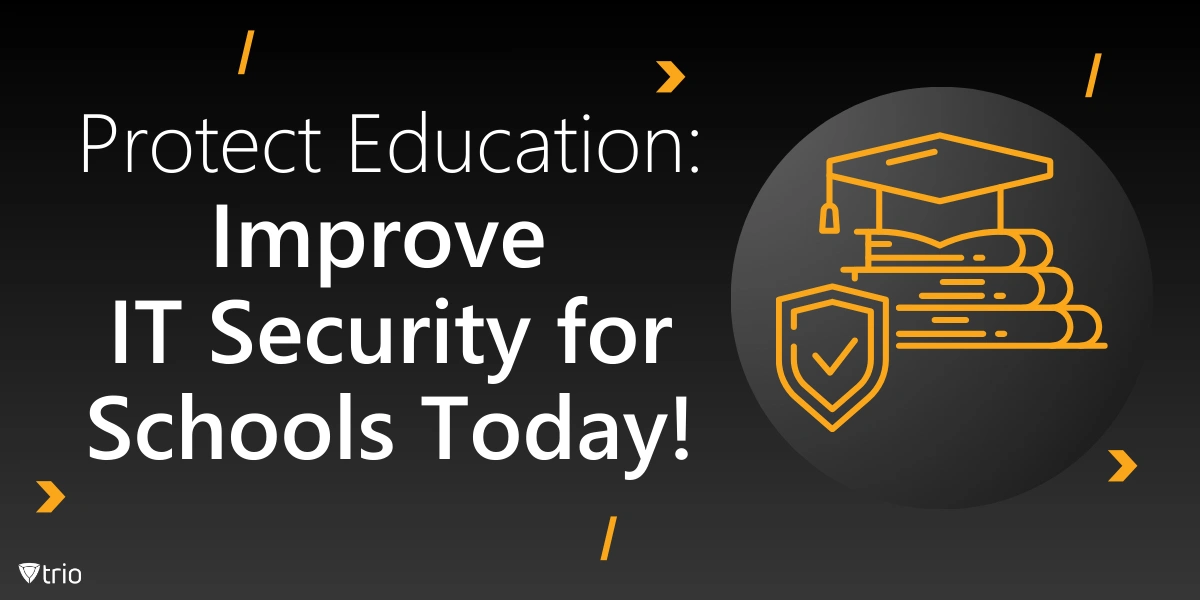In today’s digitally connected classrooms, technology plays a pivotal role in shaping education. While the benefits are numerous, the increased reliance on digital tools raises significant concerns about student privacy. From the collection and sharing of personal data to compliance with legal regulations, schools must navigate a complex landscape to protect students’ sensitive information. In this blog post, we’ll explore the key student privacy concerns, the laws designed to safeguard student data, and actionable steps schools can take to ensure compliance and build trust with students and parents alike.
Who Is Student Privacy Important?
Student privacy refers to the safeguarding of personal information, such as names, addresses, academic records, and behavioral data. In the modern educational ecosystem, this data is often stored in cloud platforms, accessed via apps, or shared across various third-party tools used for administrative purposes.
However, breaches in student privacy can lead to identity theft, unauthorized profiling, or misuse of data for marketing purposes. For parents and educators, ensuring data privacy is about more than compliance—it’s about safeguarding children’s well-being and future opportunities.
Why Should Students Have More Online Privacy?
Students should have more online privacy to ensure their personal, educational, and behavioral data remains protected from misuse or unauthorized access. In today’s digital age, schools and educational platforms collect vast amounts of information about students, including their grades, attendance records, browsing habits, and even sensitive personal details like health records. Without proper privacy measures, this data can be vulnerable to breaches or exploitation by third parties, such as advertisers or cybercriminals, leading to identity theft, targeted marketing, or other malicious activities.
Furthermore, safeguarding online privacy reduces the risk of cyberbullying and harassment, which are exacerbated by excessive surveillance and data exposure. Privacy also fosters a more secure and trusting learning environment, where students can engage with digital tools and educational resources without fear of being constantly monitored or judged. Ensuring robust privacy protections encourages academic freedom and creativity while preparing students to navigate the digital world responsibly and safely.
Student Privacy Concerns in Schools in the Digital Age
Here are some of the most prominent student privacy concerns in the digital age:
Excessive Data Collection
Many educational apps and platforms collect far more data than is necessary. Information such as location, browsing habits, and social interactions is sometimes tracked without parental consent, raising ethical questions about data usage.
Third-Party Data Sharing
EdTech providers often share data with third parties, including advertisers and analytics companies. This practice, if not properly disclosed, can undermine trust and lead to unauthorized use of sensitive information.
Data Breaches
With schools increasingly using online tools and cloud storage, the risk of cyberattacks targeting student records has surged. Data breaches can expose sensitive information, making students vulnerable to identity theft or other cybercrimes.
Lack of Transparency
Parents and educators often remain unaware of how student data is collected, stored, or shared. A lack of clear communication from schools and vendors adds to the confusion and distrust.

Key Student Privacy Laws
Several laws exist to protect students’ privacy in schools and other educational settings. Here are the most notable ones:
1. FERPA (Family Educational Rights and Privacy Act)
FERPA is a U.S. federal law enacted in 1974 to protect the privacy of student education records.
- Purpose: Gives parents and eligible students (those over 18 or attending postsecondary institutions) rights over their educational records, including the ability to review, amend, and control who can access the information.
- Key Provisions:
-
- Schools must have written consent from parents or eligible students to disclose education records, except under specific circumstances (e.g., emergencies or certain government requests).
- It allows directory information (e.g., name, address, phone number) to be shared unless parents opt out.
- Applicability: Applies to schools receiving funding from the U.S. Department of Education.
2. COPPA (Children’s Online Privacy Protection Act)
COPPA is a U.S. law passed in 1998 to protect the privacy of children under 13 using online services.
- Purpose: Regulates how websites, apps, and online services collect, use, and disclose data from children.
- Key Provisions:
-
- Companies must provide a clear privacy policy.
- Parental consent is required before collecting personal information from children.
- Limits the types of data that can be collected, such as geolocation and browsing behavior.
- Applicability: Targets websites and online services directed at children or knowingly collecting data from users under 13.
3. PPRA (Protection of Pupil Rights Amendment)
PPRA is a U.S. law focused on protecting students’ rights regarding surveys and data collection.
- Purpose: Ensures that students and parents are informed and provide consent before participating in surveys or programs funded by the U.S. Department of Education that collect sensitive data.
- Key Provisions:
-
- Protects against the collection of information about political beliefs, psychological problems, or religious affiliations without explicit parental consent.
- Schools must notify parents and offer an opt-out option for certain data collection activities.
- Applicability: Applies to federally funded educational programs.
4. GDPR (General Data Protection Regulation)
GDPR is a comprehensive European Union (EU) law implemented in 2018 to protect personal data and privacy for EU citizens.
- Purpose: Establishes strict guidelines for data collection, processing, and storage, granting individuals significant control over their personal information.
- Key Provisions:
-
- Organizations must obtain explicit consent before collecting personal data.
- Individuals have rights such as data access, correction, portability, and deletion (the “right to be forgotten”).
- Non-compliance can lead to substantial fines.
- Applicability: Applies to any organization (inside or outside the EU) that processes data of EU citizens.
5. State-Specific Laws
Many states have enacted their own student privacy laws, such as California’s Student Online Personal Information Protection Act (SOPIPA), which prohibits targeted advertising and data mining of student information.
What Data Schools Collect and How They Should Approach It
Schools typically collect a wide range of data on students to fulfill administrative, educational, and legal requirements. Here’s a breakdown of the types of data collected and an analysis of what is necessary and what might not be:
Types of Data Schools Collect
Schools collect necessary data for many purposes:
Necessary Data
1. Personal Identification Information (PII)
- Examples: Name, date of birth, gender, address, contact details, and student ID.
- Purpose: Essential for creating student records, contacting parents, and complying with regulations like FERPA.
2. Enrollment and Academic Records
- Examples: Grades, attendance, test scores, report cards, and course enrollments.
- Purpose: Necessary for assessing student performance, meeting state and federal education requirements, and planning educational resources.
3. Health and Medical Information
- Examples: Immunization records, allergies, disabilities, and emergency medical instructions.
- Purpose: Required to ensure student safety and comply with public health regulations.
4. Emergency Contact Information
- Examples: Parent/guardian names, phone numbers, and secondary emergency contacts.
- Purpose: Critical for quick communication in case of emergencies.
5. Special Education Records
- Examples: Individualized Education Plans (IEPs), 504 Plans, or behavioral intervention plans.
- Purpose: Necessary for providing appropriate accommodations under laws like IDEA (Individuals with Disabilities Education Act).
Additional Data (Often Necessary but Situational)
- Behavioral and Disciplinary Records
-
- Examples: Incident reports, suspensions, or counseling notes.
- Purpose: Useful for monitoring behavior trends and implementing corrective actions, though sensitive in nature.
- Financial Information
-
- Examples: Payment records for school meals, tuition, or extracurricular activities.
- Purpose: Necessary for financial accountability and access to subsidized programs like free lunch schemes.
- Technology Usage Data
-
- Examples: Device usage logs, app activity, and internet browsing history.
- Purpose: Supports cybersecurity efforts, remote learning, and adherence to acceptable use policies.
Unnecessary or Overly Intrusive Data
1. Detailed Biometric Data
- Examples: Fingerprints, facial recognition, or voice patterns.
- Concerns: While it can enhance security, biometric data poses significant privacy risks if breached. Often unnecessary unless used for highly specific cases like secure entry systems.
2. Social Media Activity
- Examples: Social media handles, posts, or browsing behavior.
- Concerns: Monitoring social media can be seen as invasive unless tied to a legitimate safety concern like cyberbullying.
3. Political or Religious Affiliations
- Examples: Student or family beliefs, voting history, or participation in religious organizations.
- Concerns: Collection of such data is unnecessary for education and risks violating laws like PPRA.
4. Family Income or Financial Status
- Examples: Detailed income data beyond what is required for scholarship or financial aid applications.
- Concerns: Sensitive information that schools should only collect on a need-to-know basis.
What Should Schools Prioritize?
Schools should focus on collecting only data that is directly tied to educational outcomes, safety, or legal requirements. Collecting excessive or sensitive data through digital tools in the classroom can increase privacy risks, particularly in cases of data breaches or misuse. According to TechTarget, one prep school used a combination of cloud providers to keep data secure.
Recommendations for Necessary Data
- Stick to PII, academic records, emergency contacts, and health information.
- Ensure data collection is transparent, with clear consent obtained from parents or guardians.
Avoid or Minimize Collection of:
- Non-essential behavioral or technological data unless it is anonymized and used for broader insights.
- Intrusive data like biometrics or social media activity without a valid, legally defensible reason.
By maintaining a lean and purposeful approach to data collection, schools can balance operational needs with student privacy rights effectively.
How Trio MDM Can Help Protect Student Privacy
Mobile Device Management (MDM) solutions like Trio can play a pivotal role in ensuring student data privacy by offering robust tools for securing devices and managing applications. Here’s how using MDM for schools helps:
- Application Monitoring: Trio MDM can monitor the apps installed on school-issued devices, ensuring compliance with privacy laws like COPPA and FERPA.
- Data Encryption: Protect sensitive student data with end-to-end encryption on all managed devices.
- Access Controls: Use role-based access controls to restrict data access to authorized personnel only.
- Remote Wiping: Quickly remove sensitive data from lost or stolen devices, mitigating the risk of exposure.
- Policy Enforcement: Automate policy compliance across devices to maintain consistent standards.
Conclusion
As technology evolves, new challenges and opportunities will emerge in the realm of student privacy. For instance, the adoption of AI-powered educational tools brings the potential for enhanced learning but also raises concerns about data profiling. Schools must remain vigilant and adapt their policies to keep pace with technological advancements.
Protecting student privacy is not just a legal obligation—it’s a critical responsibility for schools to ensure the trust and safety of their communities. By understanding privacy concerns, adhering to relevant laws, and adopting robust tools like Trio, schools can create a secure digital learning environment for all. Take action now! Schedule a free demo of Trio to see how it can enhance student data security and simplify device management in your school.







